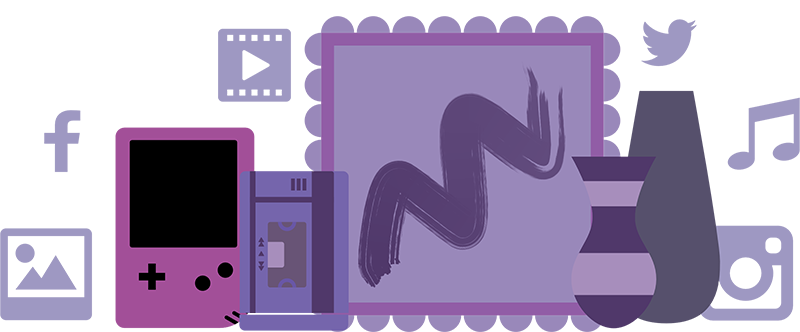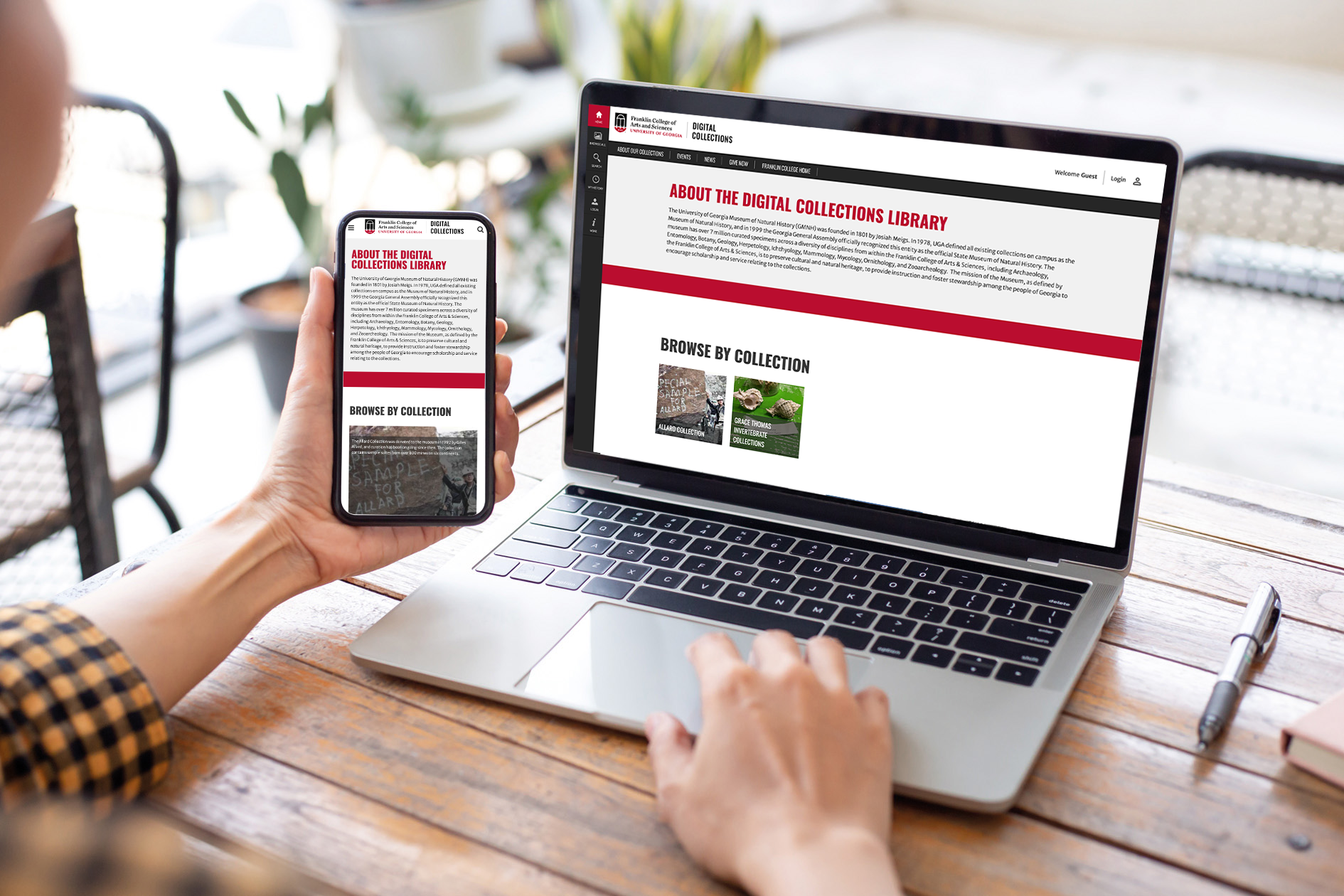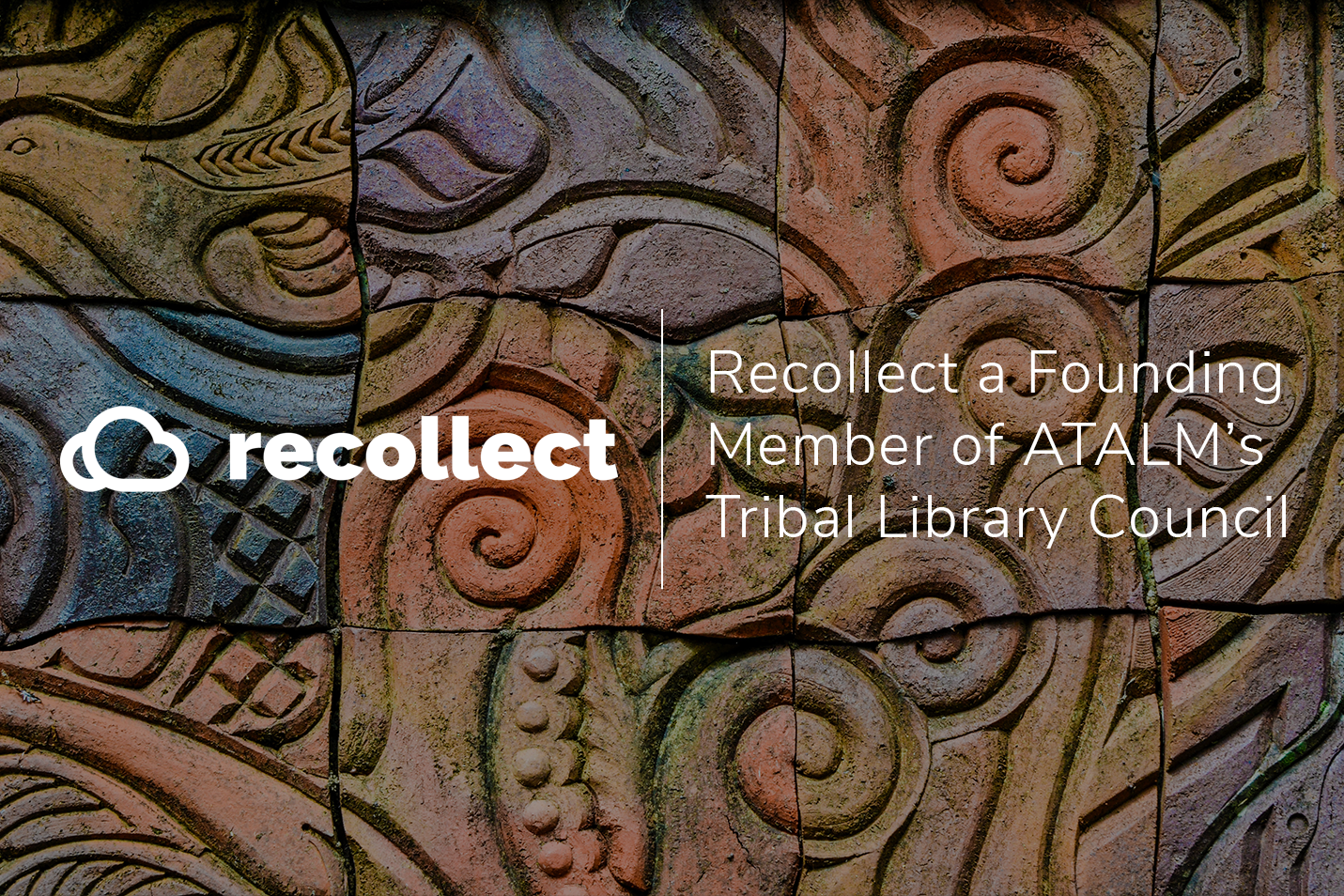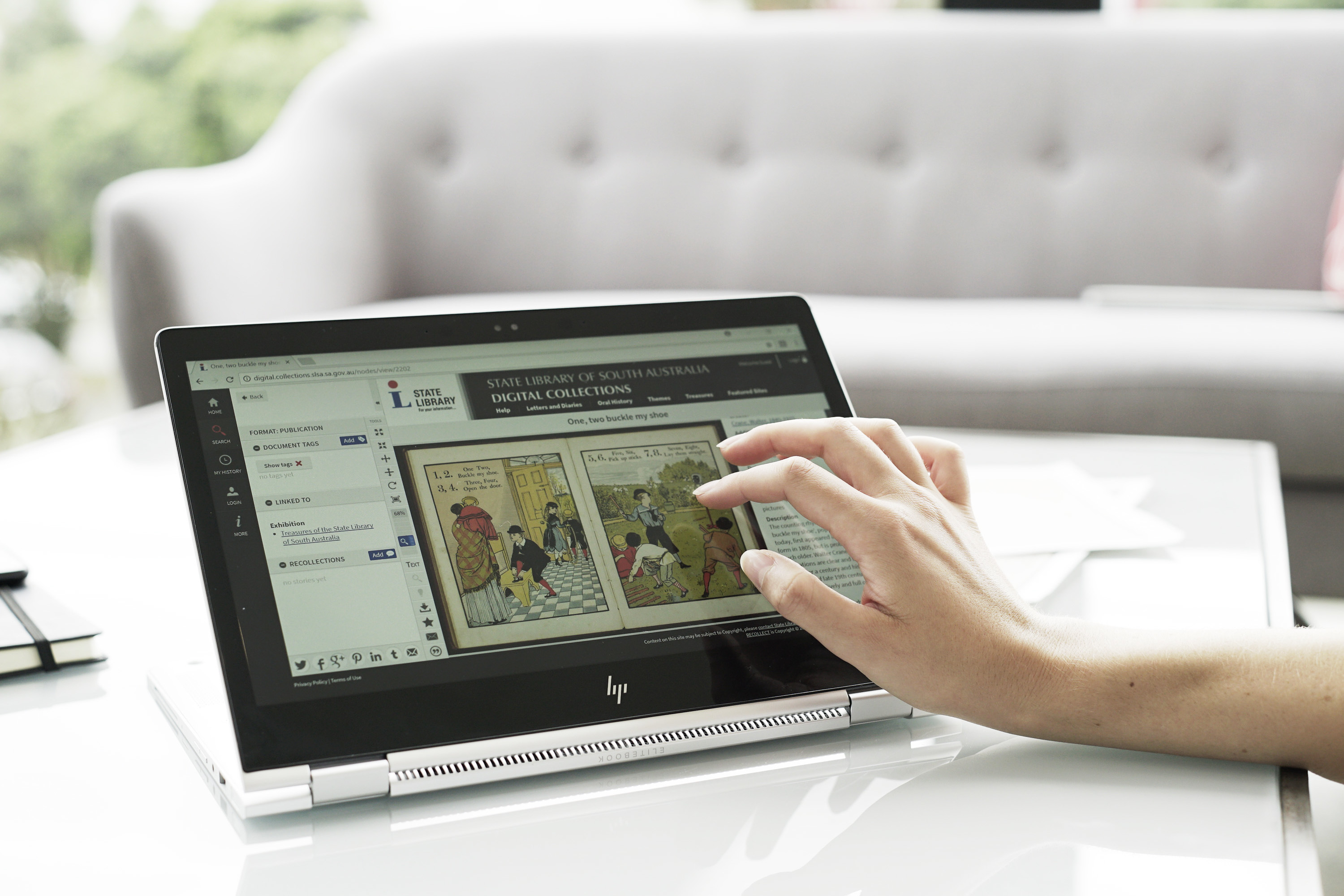
Cultural heritage organisations have the power to educate, inspire, and enlighten their communities. Generating and maintaining community engagement with archival collections can be complicated, as we witnessed during the Covid-19 pandemic, which highlighted some of the many challenges and risks. Moving collections online is one strategy organisations can use to ease the pressure and provide a way for visitors to continue to engage. It can increase the accessibility of collections and provide richer, more compelling visitor experiences. Platforms like Recollect can help organisations foster online engagement from visitors that is meaningful and informative.
What challenges community engagement?
Unforeseeable events that restrict physical or in-person interaction pose a significant risk to cultural heritage organisations. These events can trigger a loss of revenue, limit information gathering, halt collection management — and consequently, severely reduce community engagement.
Where a collection is located geographically can also be an obstacle for engagement: people may not be able to (or even have the means to) travel to your organisation’s location to view and access your collections. This can negatively impact academic circles because researchers, students, and cultural heritage professionals require access to a range of material to discover and collate information.
The reduction of available physical premises, shifting visitor demographics, widening funding expectations, and new technology are some reasons for organisations to move their collections online, pivoting their community engagement strategy to reenergise interaction with their collections.
Encouraging engagement from diverse members of your community can be a challenging task, but it is important to consider. Ensuring your engagement strategy is inclusive will mean your collections can benefit everyone your community, not just the largest groups.
The online solution

Step One – Digitise
Digitisation is an increasingly common task tackled by organisations, both inside and outside of the cultural heritage sector. It provides another form of preservation, functioning as a digital back-up of an artefact or document. It anticipates the possibility that the original item is lost, damaged, deteriorates, or becomes inaccessible in the future. Digitising your collections also has another important role, it can aid in the development of an online presence and can provide your community with endless access to your collections.

Step Two – Move Online
Technology, like the internet, does not change the kind of engagement an organisation seeks, but instead how it is achieved. Digitised collections still perform similarly to their physical counterparts: they continue to educate people, they are a means to archive or store records, they encourage storytelling, and they aim to create connections between people.
Recollect can help you bring your collections directly to your community and allow them to engage with it from their own homes. You can expand your organisation’s reach, improve your visitor experience, as well as provide an important foundation for research.
Benefits of building an online visitor experience
Collections are always accessible
Your digitised collections become more accessible once they are moved online and you can reach a wider audience, i.e., people with tight schedules and time constraints can engage with your collections from home. It provides sustained participation with your collections because people can return to your collections as often as they like and at any time.
Expand your visitor reach and grow your community
Moving your collections online means that people can engage with them even when they live on the other side of the world. It allows for better inclusivity: there are no geographical limitations, opening hours, or social constraints. It can bring diverse groups of people together, allowing for richer and more inclusive insights about your collections and what they mean to different communities.
Establishing a dedicated online engagement platform like Recollect ensures your community can make meaningful contributions to your collections. Recollect is a safe space for organisations to encourage engagement because it is without the distractions or security concerns encountered on popular social media websites. People who engage with your online collections can be afforded anonymity and their focus can remain purely on your collections. They can leave comments and tag assets that will become part of your collection’s knowledge.
Inclusive to your whole community
Recollect can help you bring your collections directly into the homes of the people who make up your community. Groups who might have otherwise felt reluctant to engage with your collections can contribute more comfortably and this encourages marginalised or neglected perspectives to be brought into the conversation. Traditional face-to-face engagement is frequently dominated by more confident or assertive groups of people and other voices can be missing all together.
People who feel nervous expressing their thoughts or offering knowledge might feel more comfortable doing so with the anonymity afforded online. Recollect encourages diversity and a wider range of perspectives.
A successful community promotes inclusivity and looks after the wellbeing of its members. Wellbeing is centred around participating meaningfully in all aspects of life, and community engagement is a key factor. Recollect can help you make sure that your members have access to valued activities and encourages social interaction.
Capture knowledge
People want to feel that they can offer something worthwhile to their community and that their contribution is appreciated. You can secure this level of engagement by providing online access to your collections and by empowering members to share their thoughts and knowledge.
Recollect enables crowd-sourcing and the collection of new material — perhaps you can reach out to your community to collect items portraying contemporary challenges and life.
Platforms encouraging participatory engagement and user contributions, like Recollect, create exciting opportunities for cultural heritage organisations. Both experts and enthusiasts alike, who have knowledge about your collections, can work together to enrich information, actively contribute knowledge, and uncover new understandings.
Recollect allows your community to share ideas and discoveries with their peers and it gives them the space to make valuable contributions to your collection. They can leave comments or “recollections”, suggest corrections, provide metadata, tag geolocations, and even donate images. Recollect enhances the level of active engagement your community can have with your collections. You can gather vast amounts of material about your collection from numerous sources: uncovering narratives about events, places, and people, while also drawing important connections to personal stories and other artefacts.
Grow digital literacy
Platforms, like Recollect, give your community members the opportunity to learn more about working online and develop new skills. Any generation can learn how to search and discover collections online — and Recollect makes this possible. Your members can browse your collections, discover new things about their community, and learn how to find information and research online.
Storytelling uncovers your community’s roots
Digital exhibitions can be curated online with Recollect to make your collections come alive. Your online collection can be just as engaging as those experienced in-person, e.g., in an art gallery or museum. Craft stories, timelines, and narratives relating to your collections and inspire your community with Recollect’s digital storytelling tools.
Help your community grow and stimulate engagement by moving away from a static or presentational configurations of online collections. This means creating more dynamic, participatory, and interactive user experiences. Collections that are accessible online and encourage user contributions extend their impact, reach, and value for the public. Recollect allows for the possibility of real-time engagement and editing of your collection’s metadata and associated information.
Preserve the integrity of original artefacts
Digitisation protects rare or fragile objects from damage that can occur during handling or display. In the past, these fragile objects might have only been accessible to an exclusive number of experts —those who have extensive handling knowledge or training. Now, digital copies of objects can serve as surrogates to the original, allowing them to be made available online to generate engagement on a much larger scale. Collections can be made accessible, via digitisation, so your community can discover items they otherwise would not have had access to.
Suggestions to boost online engagement
Crises like Covid-19 pandemic highlight how crucial online engagement is for ensuring the relevancy and longevity organisations. Below are a couple of ideas you could use to encourage online community engagement:
-
- Make use of crowdsourcing to enrich your collections. Ask people to transcribe letters, annotations on photographs, or other cultural heritage content on your Recollect site. It gives them something to do during lockdown, and also brings them closer to your online collections.
-
- Send out invitations for your community to contribute their own experiences and knowledge about your collections. Community history archives could ask for people in their community to share their experiences of the pandemic, and describe what life looks like for them in these strange times. This information can be invaluable for the future. Take a look at State Library of South Australia’s Remember My Story or the Upper Hutt City Library’s Covid-19 Project for inspiration.
-
- You could upload virtual tours of your collections.
References and Resources
Cymru, A. (2015, August). National Museum of Wales: Community Engagement Strategy, 2015-20. Retrieved from http://ourmuseum.org.uk/wp-content/uploads/Community-Engagement-Strategy-2015-20.pdf
Horwood, M. (n.d.). Going digital in the GLAM sector: ICT innovations & collaborations for taonga Māori. Retrieved from https://www.waikato.ac.nz/__data/assets/pdf_file/0008/394901/chapter21.pdf
Hussey, S. (2020, March 26). Why is Community Engagement Important? Retrieved from https://www.bangthetable.com/why-is-community-engagement-important
Pennsylvania State University. (n.d.). What is Community Engagement? (Center for Economic and Community Development). Retrieved from https://aese.psu.edu/research/centers/cecd/engagement-toolbox/engagement/what-is-community-engagement
Pennsylvania State University. (n.d.). Why Community Engagement Matters (Center for Economic and Community Development). Retrieved from https://aese.psu.edu/research/centers/cecd/engagement-toolbox/engagement/why-community-engagement-matters
Peszkowska, A. (2017, December 1). Community Engagement For Museums. Retrieved from https://medium.com/smk-open/community-engagement-for-museums-dd9a170528ca
Gensler. (n.d.). Engage: The future of museums. Retrieved from https://www.gensler.com/uploads/document/395/file/gensler_museum-research-interim-report.pdf
Saunders, M. (n.d.). 6 Benefits of Online Community Engagement. Retrieved from https://www.commonplace.is/blog/6-benefits-of-online-community-engagement
Stimler, N, & Rawlinson, L. (2019, April 4). Where Are The Edit and Upload Buttons? Dynamic Futures for Museum Collections Online. Retrieved from https://mw19.mwconf.org/paper/where-are-the-edit-and-upload-buttons-dynamic-futures-for-museum-collections-online/
Sweeney, L. (2020, March 18). Cultural Organizations & COVID-19. Retrieved from https://sr.ithaka.org/blog/cultural-organizations-covid-19/
Van der Linden, G., & Evans, G. (2020, April 3). Ideas for digital engagement in the time of COVID-19. Retrieved from https://pro.europeana.eu/post/ideas-for-digital-engagement-in-the-time-of-covid-19













